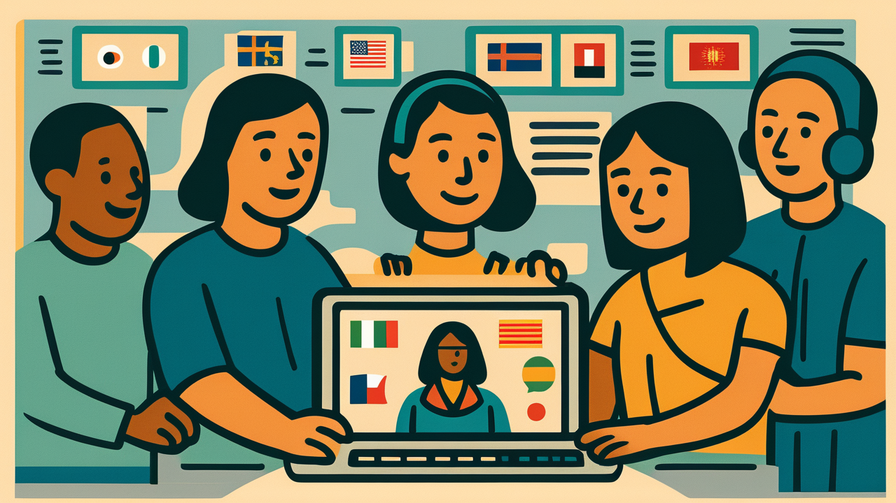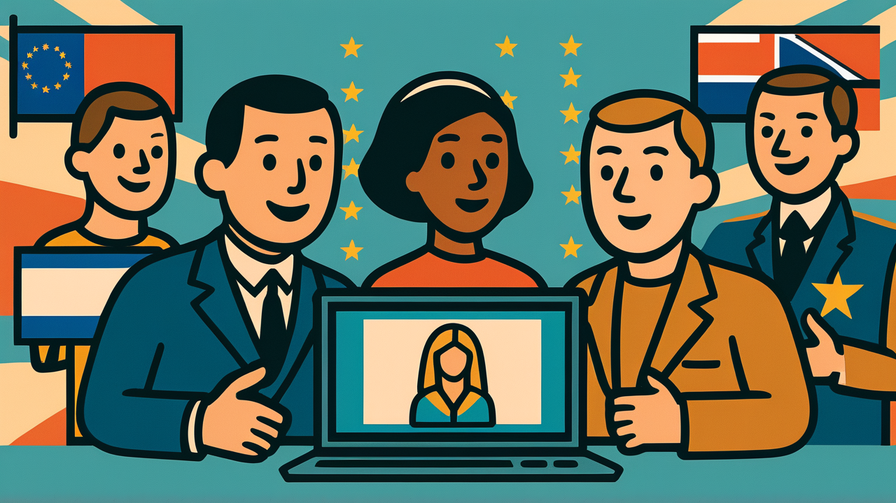[Disclaimer] This article is reconstructed based on information from external sources. Please verify the original source before referring to this content.
News Summary
The following content was published online. A translated summary is presented below. See the source for details.
NVIDIA hosted a comprehensive webinar featuring European AI researchers and companies working on “Sovereign AI” – the concept of countries and regions developing their own AI language models rather than relying on English-dominated systems from major tech companies. The event brought together experts from Hugging Face, Barcelona Supercomputing Center, and various European AI initiatives to discuss building multilingual large language models (LLMs) that understand local languages, dialects, and cultural contexts. These efforts address a critical issue: most AI systems today work best in English, potentially leaving billions of non-English speakers with inferior technology. The speakers explained how European organizations are creating AI models that understand languages from Catalan to Finnish, incorporating local knowledge and cultural nuances that global models miss. They discussed technical challenges like collecting diverse language data, training models efficiently, and ensuring AI systems respect European values and regulations. The initiative represents a broader movement toward “digital sovereignty” – countries controlling their own technological future rather than depending entirely on foreign tech giants. This includes building local AI infrastructure, training local talent, and ensuring AI systems align with local laws and cultural values.
Source: NVIDIA Events
Our Commentary
Background and Context

Imagine if all textbooks, websites, and apps were only available in a language you don’t speak fluently. That’s the reality for billions of people with current AI technology. Sovereign AI is about countries creating their own artificial intelligence systems that truly understand their languages and cultures, not just translate from English.
Currently, over 90% of AI training data is in English, despite English being spoken by only 17% of the world’s population. This creates a “digital divide” where AI assistants, translation tools, and educational resources work poorly for speakers of languages like Polish, Greek, or Basque. European nations are working together to change this.
Expert Analysis
The push for multilingual AI goes beyond mere translation. Language shapes how we think and express ideas. A Spanish AI model understands that “sobremesa” (the time spent talking after a meal) represents an important cultural concept. A Finnish model knows the subtle differences between their 15 grammatical cases. These nuances matter for education, healthcare, and legal applications.
Digital sovereignty also addresses economic and security concerns. When all AI technology comes from a few American or Chinese companies, other nations risk technological dependence. By developing local AI capabilities, European countries ensure they can innovate independently and protect their citizens’ data according to their own privacy laws.
Additional Data and Fact Reinforcement
The scale of this challenge is enormous. The European Union has 24 official languages, and the continent hosts over 200 regional and minority languages. Training an AI model for each would traditionally cost millions of dollars. However, new techniques allow models to learn multiple related languages simultaneously, reducing costs.
Europe is investing heavily in this future. The EU allocated €1 billion for AI development in 2024-2025, with significant portions dedicated to multilingual capabilities. Spain’s Barcelona Supercomputing Center hosts MareNostrum 5, one of Europe’s most powerful supercomputers, specifically for training these language models.
Related News
This sovereignty movement extends globally. India is developing AI models for its 22 official languages. The UAE created Jais, an Arabic language model. Japan focuses on preserving its complex writing system in AI. Even within the United States, efforts exist to create AI that understands regional dialects and Native American languages.
Tech giants are responding to this trend. Google and Microsoft now offer more multilingual models, while Meta released models supporting over 100 languages. However, critics argue these still lack the deep cultural understanding that locally-developed models provide.
Summary

The Sovereign AI movement represents a crucial shift in how we think about technology and culture. By creating AI systems that truly understand local languages and values, countries ensure their citizens aren’t left behind in the AI revolution. For young Europeans and global citizens, this means future AI assistants, educational tools, and creative applications will speak their language – not just literally, but culturally. This technological diversity could lead to innovations we can’t yet imagine.
Public Reaction
European students and educators strongly support having AI that understands their languages properly for homework help and research. Small business owners see opportunities to reach local customers with culturally-aware AI tools. Privacy advocates praise keeping data processing within European borders. Some worry about fragmenting the global AI ecosystem, while others see diversity as strengthening innovation.
Frequently Asked Questions
Q: What is Sovereign AI?
A: Sovereign AI means countries or regions developing their own artificial intelligence systems that understand local languages, follow local laws, and reflect local values, rather than relying entirely on AI from major tech companies.
Q: Why can’t we just translate English AI?
A: Translation loses cultural context, idioms, and ways of thinking unique to each language. A truly multilingual AI understands these nuances, making it more useful for education, healthcare, and daily life.
Q: How does this affect students?
A: Students will have AI tutors that explain concepts in their native language using familiar cultural references. This makes learning more effective and ensures technology enhances rather than replaces local educational traditions.


